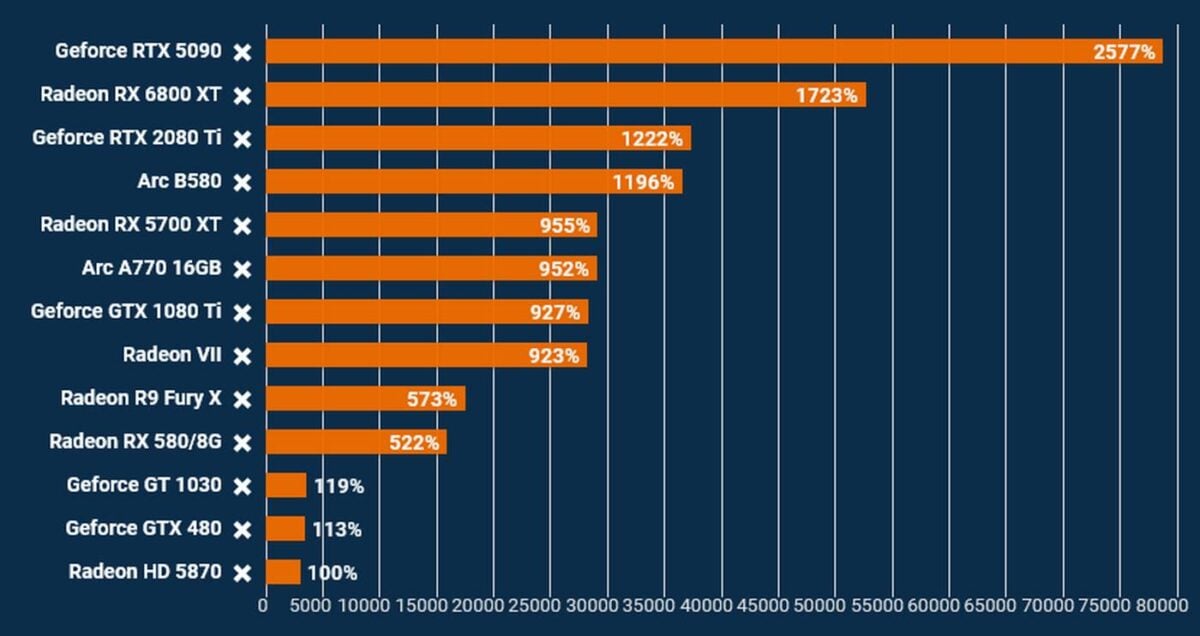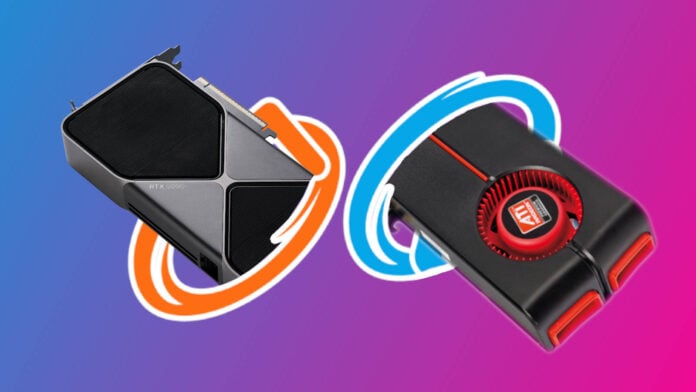Folks at PC Games Hardware (PCGH) have compiled one of the most comprehensive GPU tests by giving us an idea about the technological achievements of the last 16 years. From yesteryears’ flagships to today’s 600W behemoths, the overall performance has improved over 25-fold.
To celebrate its 25th anniversary, PCGH has treated us to its largest GPU test ever, comprising 180 cards released from 2009 to 2025. The outlet put each one of these through multiple synthetic and gaming benchmarks, including 3DMark, Bioshock Infinite, and Tomb Raider (2013), uncovering the improvements brought by each generation. A sort of reminder of what each graphic architecture has brought to the table, from the hot-running Nvidia Fermi, which gave us the egg-cooking meme, to Polaris, which marked AMD’s first absence in the high-end segment.
To keep things as apples-to-apples as possible, PCGH selected DirectX 11 titles exclusively, so all cards can run them natively without further tweaks. The tests were conducted on an Intel Core i9-14900KS platform paired with DDR5-8200 memory, and the processor was overclocked to 6.2GHz to reduce the effect of CPU bottleneck on modern GPUs.
The most interesting comparison is undoubtedly Nvidia’s GTX 480, the brand’s flagship at the time, against the current king, the RTX 5090. In 3DMark Fire Strike, the RTX 5090 led ahead by a whopping 2,178%, a result that I wasn’t expecting, to be frank. Moving to Bioshock Infinite, one of my favourite games of all time, the RTX 5090 with 490fps made the GTX 480’s 50fps look like a slideshow, marking an 880% separation. Lastly, in Tomb Raider (2013), the RTX 5090 showed the biggest advantage, with a 2,334% uplift.

Another interesting comparison is AMD’s HD 5870, which was quite a beast in its time. Here, the RTX 5090 led by 2,477% in 3DMark, 920% in Bioshock, and a whopping 2,790% in Tomb Raider.
These tests have also shed light on the consequences of low GPU memory, as PCGH indicated that the previously popular 3 to 4GB of VRAM no longer cuts it, even in these DX11 games. 8GB has become the de facto minimum, with 12 to 16GB recommended to be safe from stuttering in demanding games. In some cases, a good amount of VRAM and driver optimisation can be preferable to higher CUDA counts.
We mentioned just a glimpse of the gargantuan work done by PCGH, so we highly encourage you to read the full article. Overall, great work, showing that GPUs do in fact improve quite drastically; it’s just that sometimes we tend to miss the big picture when focusing on gen-to-gen progression.


